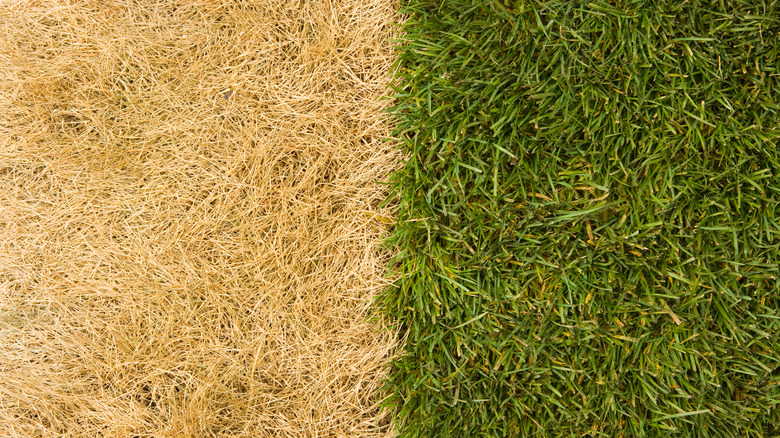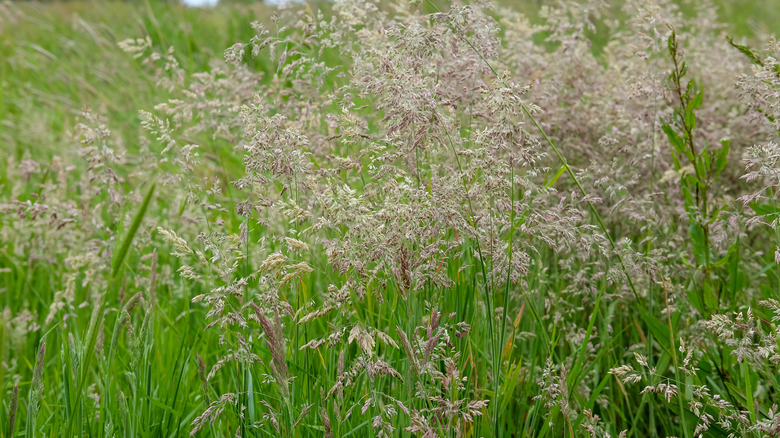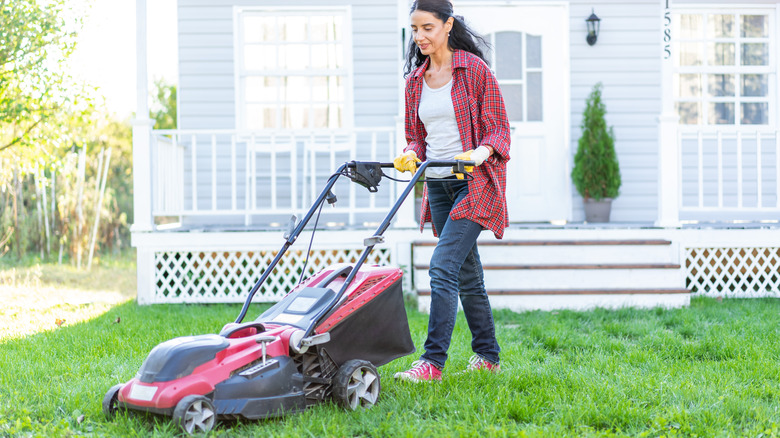What It Means If Your Lawn Goes To Seed (And What To Do About It)
A lush green lawn is a source of pride for many homeowners. Unfortunately, keeping grass vibrant and healthy can become a source of stress. Brown, brittle spots may occur, and when this happens, it means the lawn has gone to seed. Like all plants, grass has its own unique lifecycle with a reproductive stage. When your grass enters the stage of going to seed, it becomes yellowish and dry. You may dread this stage of your lawn's lifecycle.
When a lawn "goes to seed," the grass creates seed heads. Seedheads are the flowering part of the grass that will eventually produce seeds. As the name suggests, the heads are at the top of the blades of grass. The seedheads make the grass appear dry, brittle, and brown. While it may seem like a good thing to have a lawn that produces seeds, its change in appearance can be frustrating if you want a lawn of happy and healthy green grass.
What does it mean when a lawn goes to seed?
Grass undergoes four stages during its lifecycle. It begins with the germination phase when seeds begin to sprout and develop roots. Then, once germination has occurred, grass enters a growing stage where it becomes healthier and more robust. After that, it reaches maturation and gives your lawn the gorgeous green appearance you want. Finally, grass begins to reproduce and flower towards the end of its life.
When grass has entered the reproductive stage, the blades begin to split and form seedheads. The seedheads disperse seeds for new grass. However, they typically cannot reach the soil, so they likely won't germinate in your lawn, which is what causes those tough brown patches. This is a natural part of a healthy grass lifecycle and is unavoidable. However, once you spot those brown patches, you can take action to get rid of the unsightly spots and brittle seedheads.
Here's what to do if your lawn goes to seed
If your lawn has gone to seed, there are multiple solutions available to you. Luckily, they're things you likely already know how to do. While there isn't a way to stop a lawn from going to seed, these solutions will help return it to its vibrant green state. First, ensure your mower blades are properly sharpened. The sharper the blades, the easier it will be to snip off the tough and coarse seedheads. You'll also want to mow more often. Once this seedhead process starts in one area, it will likely happen all over the rest of your lawn. Due to the texture of the seedheads, you may need to resharpen the mower blades more frequently to ensure the best cut.
After your lawn has left the reproductive stage, you need to give it adequate nutrients. What your lawn needs is dependent on the species of grass you grow. An appropriate fertilizer and watering schedule will prolong the vegetative state and put off the next reproductive stage. That way, your lawn stays greener for longer.



